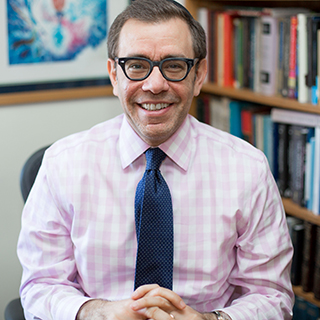Ultimate Questions

Shabbat Shuvah | Rosh Hashanah
By :
David Hoffman
Posted On Sep 20, 2012 / 5773 | Torah Commentary | Holidays




There are some who expect religion to provide answers. The religious experience is thought to be a refuge from the messiness of life; a peaceful, ordered worldview that may help explain life’s daunting moments. In this way, faith offers the believer comfort that life is as it was meant to be, and that one’s spiritual work centers on acceptance and “finding” one’s path.
Judaism turns these ideas on their head.
From Abraham and Sarah, Moses and Isaiah to Rabbi Akivah and Rabbi Abraham Joshua Heschel in the 20th century, Judaism has never been about acceptance. The greatest teaching that Judaism offers the world is that the way things are is not the way things have to be. The course of our lives and the condition of the world are not inevitable realities. God, through the Torah’s commandments and the protest of the prophets, created a vision of the world as it was meant to be, but is not yet. This is true on the micro level and on the macro level. That is to say, there is a version of ourselves who we are not yet, but our families and communities need us to be. The Rabbis of the Talmud continued this work of envisioning more just and compassionate versions of the world and gave this dream a name—redemption. However, the Rabbis never intended that we ignore the world in front of us in favor of this dream. We are asked to be present for the world in all of its brokenness, while simultaneously holding the vision of the world as it should be.
This, perhaps, is the core religious commitment of a Jew: to live with an awareness of this sacred tension between the reality of our world and lives and the dream of what they should be.
This idea is developed in a poignant discussion in the Talmud, where the Rabbis suggestively imagine the type of questions that the Heavenly court will greet each of us with at the end of our days. Here the Rabbis propose that, at the moment of a person’s final judgment, the Heavenly court will pose the question:
“Did you look toward redemption (tzipita la’yeshuah)?” (Shabbat 31a)
Such a curious question, and certainly not one I would have expected. How is the fact of whether I “looked toward redemption” going to help the Heavenly court pass judgment on my life? And, frankly, what does it mean to “look toward redemption?”
A brief study of the word tzipita is instructive in helping us understand this piece of Talmud. I have translated it above as “look toward,” but most English translations of the Talmud have “look forward to” or “wait in hope.” Indeed, this verb is often used to express a sense of anticipation. With that in mind, in one possible reading of this question, the Rabbis suggest that the very act of hoping for redemption-hoping for the world as it should be—is a religiously meaningful act, one so central to the life of a Jew that she will be judged at the end of her days on the basis of whether she lived with hope for the future or not.
Yet there is another way to understand this word that is more active than hope and expectation. The root of tzipita engages themes of sight, reflecting such meanings as “to look, to have a vision, to foresee.” In Modern Hebrew, a tzofeh is a scout; Israeli children join the tzofim just as children join the Boy Scouts or Girl Scouts in the United States. Har Hatzofim in Jerusalem is known in English as Mount Scopus or “Lookout Mountain.”
Taking into consideration this second way of understanding tzipita, I suggest that the Heavenly court is going to ask each of us, “Did we actively envision (that is to say, did we look toward the future and imagine) the state of the world in a better form than exists now? Did we have the courage and the strength to imagine who each of us needs to be in the world? Were we able to honestly identify and painfully confront areas of personal growth? Or did we live resigned to or complacent with the reality of our life as it exists before us?
These are the ultimate questions that we will face at the end of our days. I refer to this state of consciously living in the gap between what is and what should be as sacred tension. It’s sacred because this discomfort is meant to be generative and not overwhelm us with discontent or paralysis. Without experiencing this tension, we will never be creatively nudged and agitated to move our world toward redemption. The dissonance that this tension raises is meant to inspire us to identify and engage the work needed to close the gap between reality and vision.
The Rabbis ask: “Who is called a tzofeh, a scout or pilgrim on their way to Jerusalem? One who sees Jerusalem and never loses sight of it again” (Tosefta Pesachim 3:12). I propose that this is a metaphor for our spiritual lives. The role of a scout is to identify where we need to be in relationship to where we are. Each of us is called on to be a scout, tasked with identifying where we are and navigating to where we need to be. Judaism gently nudges us to honestly acknowledge where we are on our long journey to Jerusalem, while challenging us to never let “Jerusalem” out of our vision as we take small steps on this path.
May we all be blessed with a year of health, peace, and challenging but productive moments, experiencing the discomfort of seeing the world as it is and also as God wants it to be.